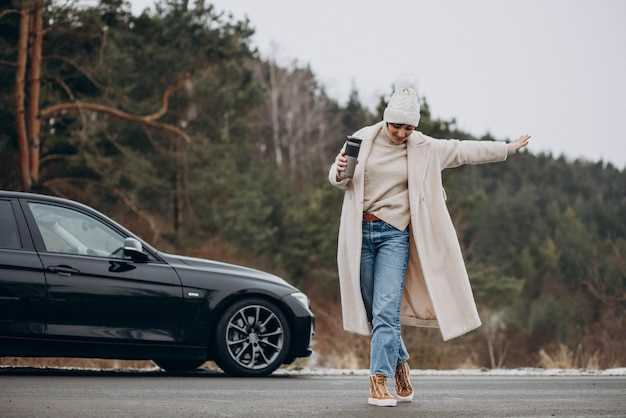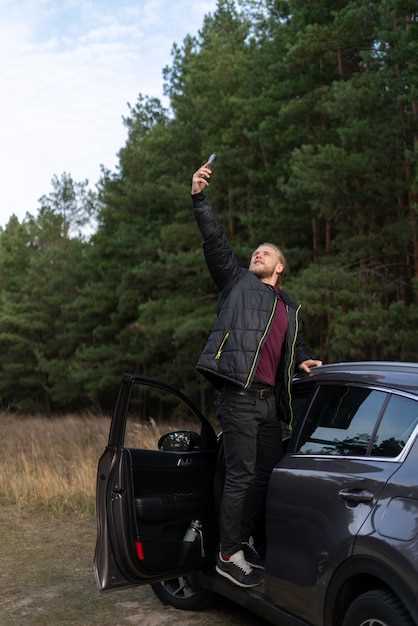
Capturing the thrill of a moving car through rolling shots is an art that requires a blend of technique, timing, and creativity. These dynamic images not only showcase the beauty and design of the vehicle but also convey the sensation of speed and motion. In this article, we will explore various methods to perfect your rolling shots, ensuring that every frame tells a compelling story.
Rolling shots are distinct because they combine both the car’s movement and the background to create a sense of action. Unlike static shots, these images challenge photographers to balance focus and aesthetics while maintaining clarity. Mastering this technique involves understanding the interplay between your camera settings, the speed of the vehicle, and the angle from which you are shooting.
In the sections that follow, we will delve into essential techniques and tips that will enhance your ability to capture breathtaking rolling shots. From choosing the right location to optimizing camera settings, each aspect contributes to elevating your photography skills. Whether you’re a seasoned professional or an enthusiastic beginner, this guide aims to provide valuable insights into the world of automobile photography.
Camera Settings for Optimal Motion Capture
To achieve stunning rolling shots of moving cars, selecting the right camera settings is crucial. One of the primary considerations is shutter speed. A faster shutter speed, typically around 1/500 to 1/1000 seconds, ensures sharp images of the vehicle, reducing motion blur. However, for a more dynamic effect, slower shutter speeds between 1/125 to 1/250 seconds can be used to create a sense of movement, allowing the background to blur while keeping the car in focus.
Another important setting is the aperture. A wider aperture (lower f-stop number) can help isolate the subject and create a pleasing bokeh effect in the background, enhancing the focus on the moving car. A good starting point is between f/2.8 to f/5.6, depending on lighting conditions.
ISO settings also play a vital role in motion capture. In bright conditions, keep ISO low (around 100 to 400) to maintain image clarity. In lower light scenarios, increase the ISO to avoid motion blur, but be cautious of introducing noise. Additionally, utilizing the camera’s burst mode can help capture multiple frames in quick succession, ensuring you don’t miss the perfect shot.
Focusing techniques can significantly influence the outcome of rolling shots. Continuous autofocus (AF-C) is recommended as it tracks the moving car, maintaining focus as it accelerates or decelerates. Setting up a focus point on the car before the shoot can also improve results.
Lastly, the choice of lens affects the motion capture outcome. A lens with a focal length between 24mm to 70mm offers versatility in framing the vehicle while providing an appealing depth of field. A stabilizing feature, either in the lens or camera body, can further enhance performance, ensuring that even while in motion, the shots remain steady.
Best Equipment for Rolling Shots on the Road

When it comes to capturing stunning rolling shots of moving cars, the right equipment is crucial to achieving the desired motion effect. Here are some of the best tools to consider for your next automotive shoot.
Firstly, a high-quality camera is essential. DSLR or mirrorless cameras with fast autofocus systems will help you keep pace with moving vehicles. Look for models that perform well in various lighting conditions, as shooting on the road can involve changing light scenarios.
Lenses play a significant role in rolling shots. A versatile zoom lens, such as a 24-70mm or 70-200mm, allows you to frame shots effectively while keeping the car in focus. Additionally, using a wide-angle lens can enhance the sense of motion, capturing more of the environment surrounding the vehicle.
Stabilization equipment is another key component. A gimbal or a steadicam can help to keep your shots stable while the car is in motion, reducing unwanted shake and ensuring smooth footage. If using a drone, opt for one with built-in stabilization to maintain quality even at higher speeds.
Consider using a car mount or a suction cup mount for fixed shots. These allow you to securely attach your camera to the vehicle, providing unique perspectives without the need for handheld shooting. This technique can yield captivating motion effects as you follow along with the car.
Lastly, don’t overlook the importance of good lighting equipment. Natural light is often the best option, but having portable LED lights can help enhance visibility and highlight the car’s features during twilight or overcast conditions.
In summary, investing in a reliable camera, versatile lenses, stabilization tools, appropriate mounting solutions, and effective lighting can dramatically improve the quality of your rolling shots and capture the dynamic motion of cars on the road.
Advanced Techniques for Stability and Composition

Achieving perfect rolling shots of moving cars requires not only technical skills but also an understanding of stability and composition. Employing advanced techniques can significantly enhance the quality of your shots while maintaining the essence of motion.
One of the primary tools for stability is the use of a gimbal. A high-quality gimbal stabilizer counteracts the natural hand movements and vibrations, allowing for smooth footage even at high speeds. When utilizing a gimbal, it’s essential to balance the camera correctly to ensure optimal performance and stability.
Incorporating a drone offers another perspective for capturing rolling shots. Drones provide an aerial view, enhancing the composition and giving a sense of scale to the scene. When using a drone, focus on maintaining a steady altitude and distance from the moving vehicle to create a dynamic yet stable shot.
For ground-level shots, consider using a handheld rig or a vehicle-mounted system. When filming from another vehicle, ensure that both are traveling at similar speeds. This alignment reduces the risk of unwanted motion blur, leading to a clearer image of the car in motion.
Composition is equally vital for capturing the essence of rolling shots. Utilize leading lines, such as roads or paths, to guide the viewer’s eye towards the subject. Position the camera at different angles to experiment with perspective, allowing for creative framing. The rule of thirds can enhance the composition, placing the moving car strategically within the frame for optimal impact.
Incorporate panning techniques by moving the camera along with the moving car. Panning captures the motion beautifully while keeping the subject in focus. This technique emphasizes the car’s speed and creates a sense of dynamism in the shot.
Finally, be mindful of lighting conditions. Soft, diffused light during the golden hour provides the best ambiance for rolling shots. Adjust exposure settings to account for varying light levels while ensuring that the motion is captured without losing detail.
Combining these advanced stability and composition techniques will elevate your rolling shots, creating visually stunning representations of motion that capture the excitement and essence of moving cars.





